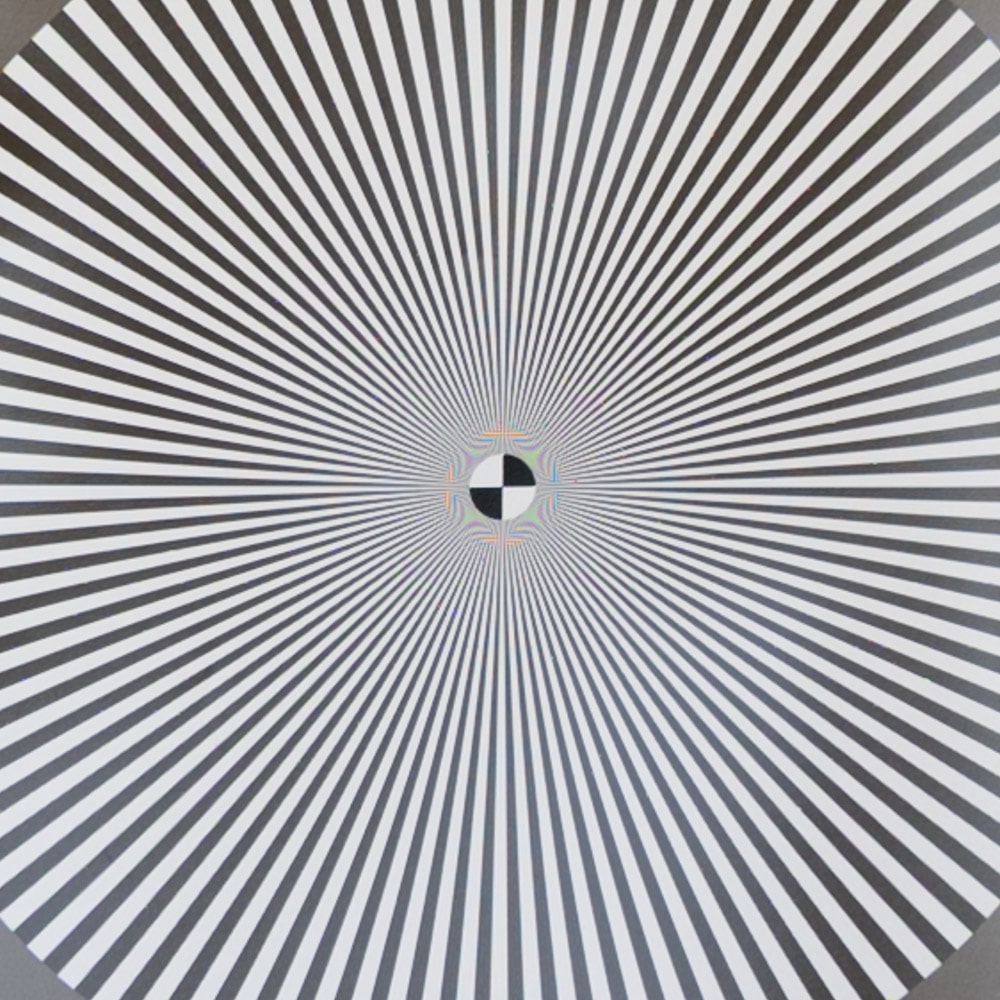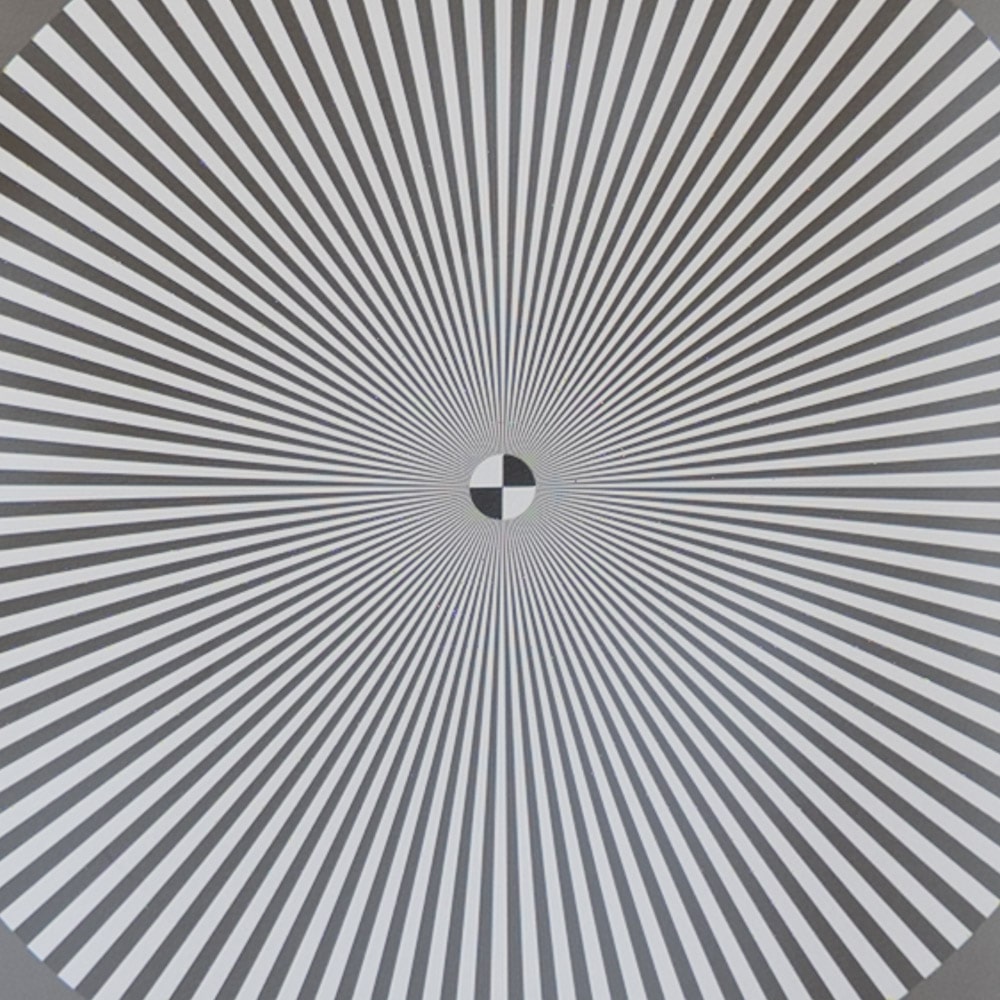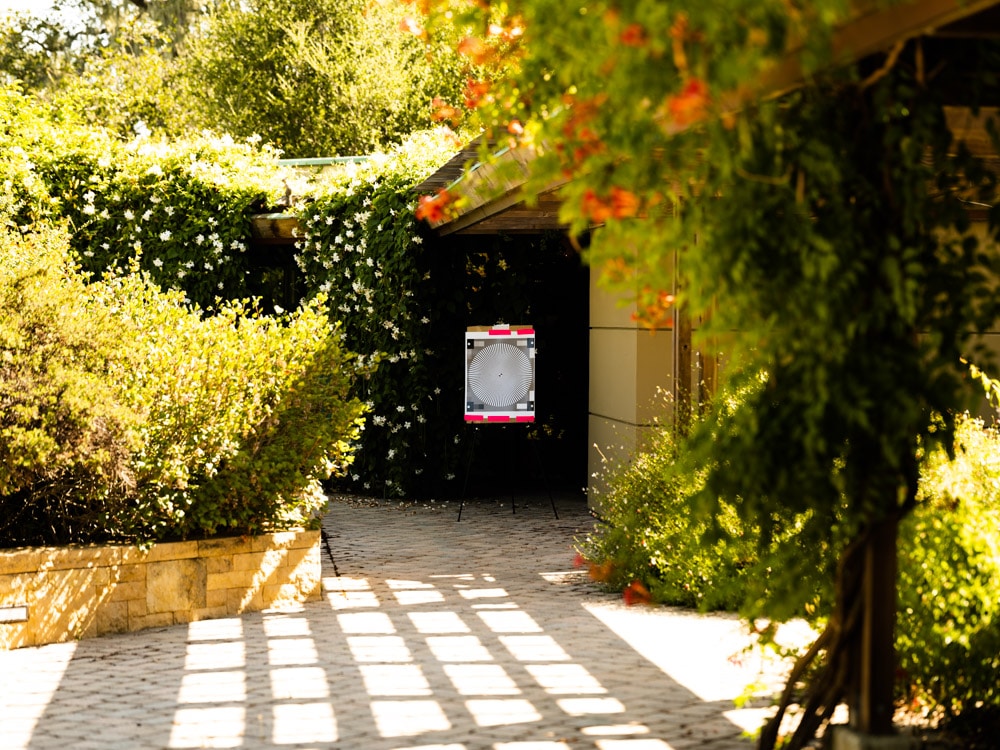Adobe has introduced a new feature in Camera Raw 13.2. They call it Super Resolution. I’ll call it SR here.
SR is a demosaicing technique that produces an output image with twice the number of pixels as the raw file in both dimensions. That means the file as four times the number of pixels of the raw file. SR is AI-based, and builds on the Enhance Details feature that we’ve had for a year or so.
I tested it with a Siemens Star, which is probably playing to its strengths. I’m guessing such a star was part of the training set.
The scene, with a GFX 100 and the Fuji 110 mm f/2 lens at f/2, Lr default settings except that sharpening amount set to 20 instead of the default 40. I white balanced to the gray parts of the star afterwards, and the balance isn’t quite the same in the crops below. I apologize for that.
Three closeups, at 1:1 magnification. Click on the image, then tell your browser to use 100% magnification.



Good performance. False color essentially eliminated with both of the AI demasicing techniques.

Impressive! First thing that came to my mind was what will we get when we combine SR with Pixel Shift Multishot. I don’t mean you should do this test, but just wonder how it would be to work on a 1.6 Gp file (~1.0 for my A7R4). The industry should provide us proxi files as is done for video, which could be worked in RAW converters and image editors. That is already necessary as we are dealing with tens or hundreds of the now standard high resolution images.
I wonder how this compares to a like Topaz gigapixel AI enhancement.
I didn’t do that in combination with Enhance Details, but here’s how it looks with regular Lightroom demosaicing.
https://blog.kasson.com/nikon-z6-7/megapixels-smart-resizing-and-printing-topaz-gigapixel-ai/
beside the amazing NR i see similar effects of artefact suppression and better detail with dxo deep prime too when used on low iso shots. seems ai based decoding sets a new standard. it will become a challenge for other companies especially c1 to compete in this field.
@Zé De Boni the idea to work on proxies files was already available 25 years ago in the at the time ground breaking livepicture software but sadly the much inferior photoshop won the game.
Internally, Lightroom uses a technique similar to Live Picture.